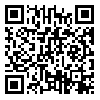BibTeX | RIS | EndNote | Medlars | ProCite | Reference Manager | RefWorks
Send citation to:
URL: http://tumj.tums.ac.ir/article-1-46-en.html
Background: Percutaneous endoscopic gastrostomy (PEG) is one of the ways to non-oral feeding in patients with dysphagia caused by conditions such as stroke, oropharyngeal malignancy and motor neuron disease. The aim of study was assessment of early outcome of PEG in hospitalized patients according to clinical situation and underlying disease.
Methods: This study was cross- sectional and prospective. Sixty five patients were included with PEG from April 2011 to July 2012, at Sina University Hospital, Tehran, Iran. Tube function, feeding, and patients' symptoms were assessed and patients were followed six month at least to one year after procedure .The follow up of patients were stopped if the patient died or removal of tube.
Results: Sixty five patients (33 men, 32 women) enrolled in this study. The mean age of patients was 57.45±16.83 years (19-94 years). Head trauma and postoperative thoracic surgery were in 15 (23.1%) and 4 (6.2%) cases. 36 of patients (55.39%) had no symptoms. The complications include lickage (11 cases), stenosis (9 cases), cellulitis (7 cases), and PEG separation (2 cases). A total of 29 patients were complicated and 21 patients (72%) of them complicated 2 -5 months after PEG. No statistical significant differences between two sexes in PEG complication. 27 patients (41%) died that have no relation to complications of PEG.
Conclusion: Finally, the study showed the PEG is a safe method to enteral nutrition. The advantages of this method include its simplicity, no need to general anesthesia and low rate of complications especially in inpatient under the supervision of medical staff. Therefore it can be used as a favorable method.
| Rights and permissions | |
 |
This work is licensed under a Creative Commons Attribution-NonCommercial 4.0 International License. |





